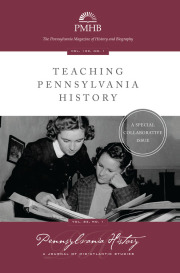Restricting Black Mobility as a Key Function of Racial Control in Post-Emancipation Societies; The Parker Sisters: A Border Kidnapping; Colored Travelers: Mobility and the Fight for Citizenship before the Civil War; The Underground Railroad
Main Article Content
Abstract
Reconstruction is still with us. Recent events such as the NAACP’s travel advisory warning black Americans to be cautious in Missouri and the events that erupted in Charlottesville, Virginia, have clearly shown that the United States has yet to face reconstruction over 150 years after the Civil War outlawed race-based slavery.” For historians, “Reconstruction” refers to the United States in the years following the Civil War. What if, however, the term “reconstruction” were to be unhooked from that specific time period and instead used to describe a society in flux after the end of slavery? It could then mean something less temporally specific but more thematically unified—the period of confusion and chaos that followed in the wake of American emancipation. It would go from a capital R time period to a lower-case r descriptor of promises of freedom yet to be fulfilled throughout the United States. Instead of focusing on both regions from 1866 to 1877, then, studies of reconstruction would start in the northern states in the early to mid-1800s as gradual emancipation slowly took hold and in the southern states after slavery abruptly ended in the wake of the Civil War. Northern reconstruction, from this angle, began before southern reconstruction and was complicated by the continued existence of slavery in half of the country. In this broad sense, reconstruction continues today. The racism that developed and grew alongside slavery has yet to die away.
Article Details
Pennsylvania History is the official journal of the Pennsylvania Historical Association, and copyright remains with PHA as the publisher of this journal.
